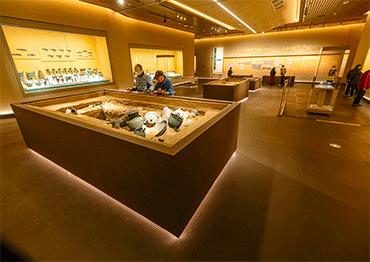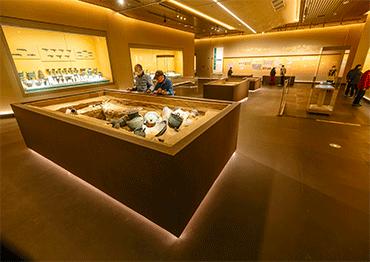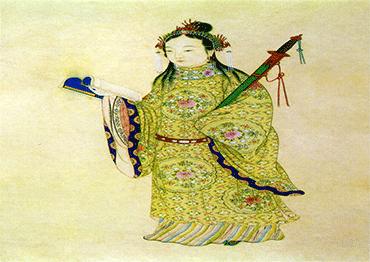The bond between Fu Hao and Wu Ding was exceptionally strong, with numerous historical records describing their shared affection. Each time Fu Hao returned triumphantly from a military expedition, Wu Ding’s joy was evident as he eagerly ventured outside the city to welcome her. Recovered oracle bone inscriptions describe how on one occasion, Wu Ding traveled more than 80 kilometers. The palpable excitement of their reunion was evident, as the couple, disregarding their entourage, left their subordinates behind and rode side by side, galloping off together.
In addition, oracle bone divinations detailing Wu Ding’s inquiries about Fu Hao’s health and fertility, such as “Fu Hao has a toothache; can it be cured?” and “Is Fu Hao pregnant?” reflect a deep devotion to his wife and portray him as a caring and doting husband.
As Wu Ding’s final queen, Fu Hao bore three children. She passed away in her 30s, but the cause of her death remains disputed among historians. While Fu Hao’s lifespan was not considered short for her time, her departure was relatively early, especially when compared to Wu Ding’s disputed age of between 70 and 80.
Wu Ding mourned Fu Hao’s death deeply. In a break with protocol, he opted to bury her near the palace instead of in the imperial cemetery. While unorthodox, the meaning behind the decision becomes evident when taking into account the extraordinary bond they shared.
Although no records of Fu Hao’s physical appearance exist, artifacts unearthed from her tomb offer some clues. The Shang left elaborate burial sites, frequently entombing a multitude of items used by the deceased in life. These enable researchers to infer certain details about the tomb’s occupant.
Located about 400 meters northwest of Xiaotun Village in Anyang, Fu Hao’s tomb measures 5.6 meters long and 4 meters wide. Remarkably, it yielded a total of 1,928 burial items, 468 of which were bronze artifacts.
Several large yue, or battle-axes, were unearthed, notably a pair of bronze yue – one embellished with a dragon motif and the other with a tiger motif – each weighing nine kilograms. If these yue were indeed the weapons used by Fu Hao during her lifetime, they suggest she possessed significant strength and tall stature, given that wielding such heavy battle-axes would demand considerable physical prowess.
Additionally, a jade thumb ring discovered in Fu Hao’s tomb is currently the largest known thumb ring from the Shang and the subsequent Zhou Dynasty (1046- 256 BCE). Its size suggests it was intended for the finger of a robust male, leading to speculation about Fu Hao’s potential height, which some experts estimate at 1.75 meters.
A kneeling jade figurine found in Fu Hao’s tomb is carved with distinct Mongolian facial features. A knife handle is visible on the back of the figurine, which is generally accepted to symbolize military might. This has led to speculation that the figurine is of Fu Hao herself.
After Fu Hao’s passing, Wu Ding frequently turned to divination to inquire about which deceased Shang king had “claimed” her as a wife in the afterlife. Recovered oracle bone divinations by Wu Ding mention three previous Shang kings: the sixth, Zu Yi, the 11th, Tai Jia, and the 13th, Cheng Tang.
Various interpretations surround Wu Ding’s inquiries. One posits that after Fu Hao’s death, Wu Ding entrusted her to three great kings in the underworld. Another suggests that Wu Ding’s inquiries were about determining which king had claimed her so he could make the appropriate ritual sacrifices.
These diverse interpretations revolve around the inclusion of the character qu (meaning “to take”). Comprising the radical for “ear” on the left and “hand” on the right, the character originally meant the act of cutting off an enemy’s ear as a trophy. During the Shang, qu also symbolized capturing women as spoils of war. It later encompassed the broader meaning “to acquire.”
The character is also a homonym for the word meaning “to marry,” which further contributes to the ambiguity of Wu Ding’s divinations. Regardless, Fu Hao clearly had lived a remarkable life, reflected in her military successes, her brilliance and the devoted love of her husband.

 Old Version
Old Version



